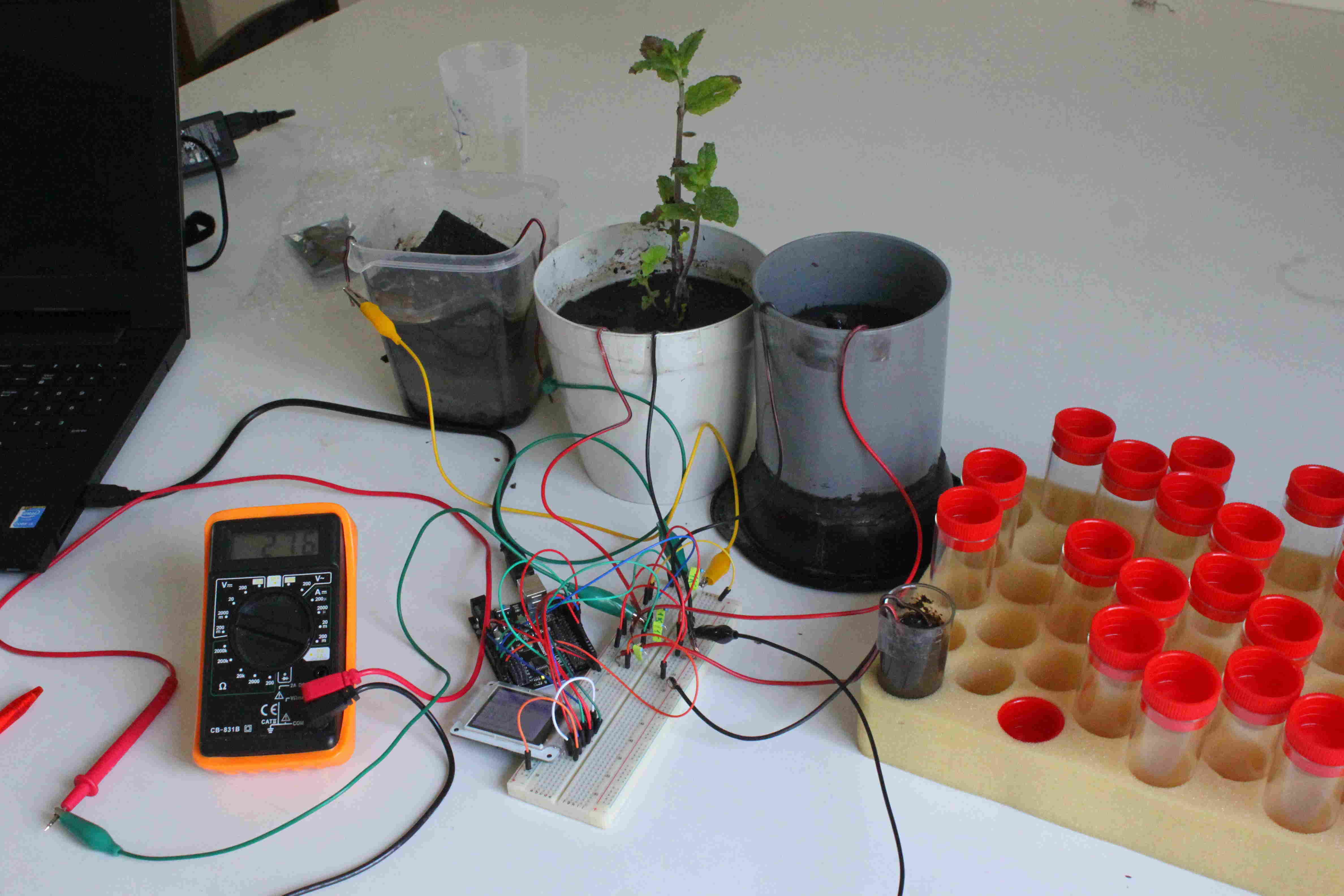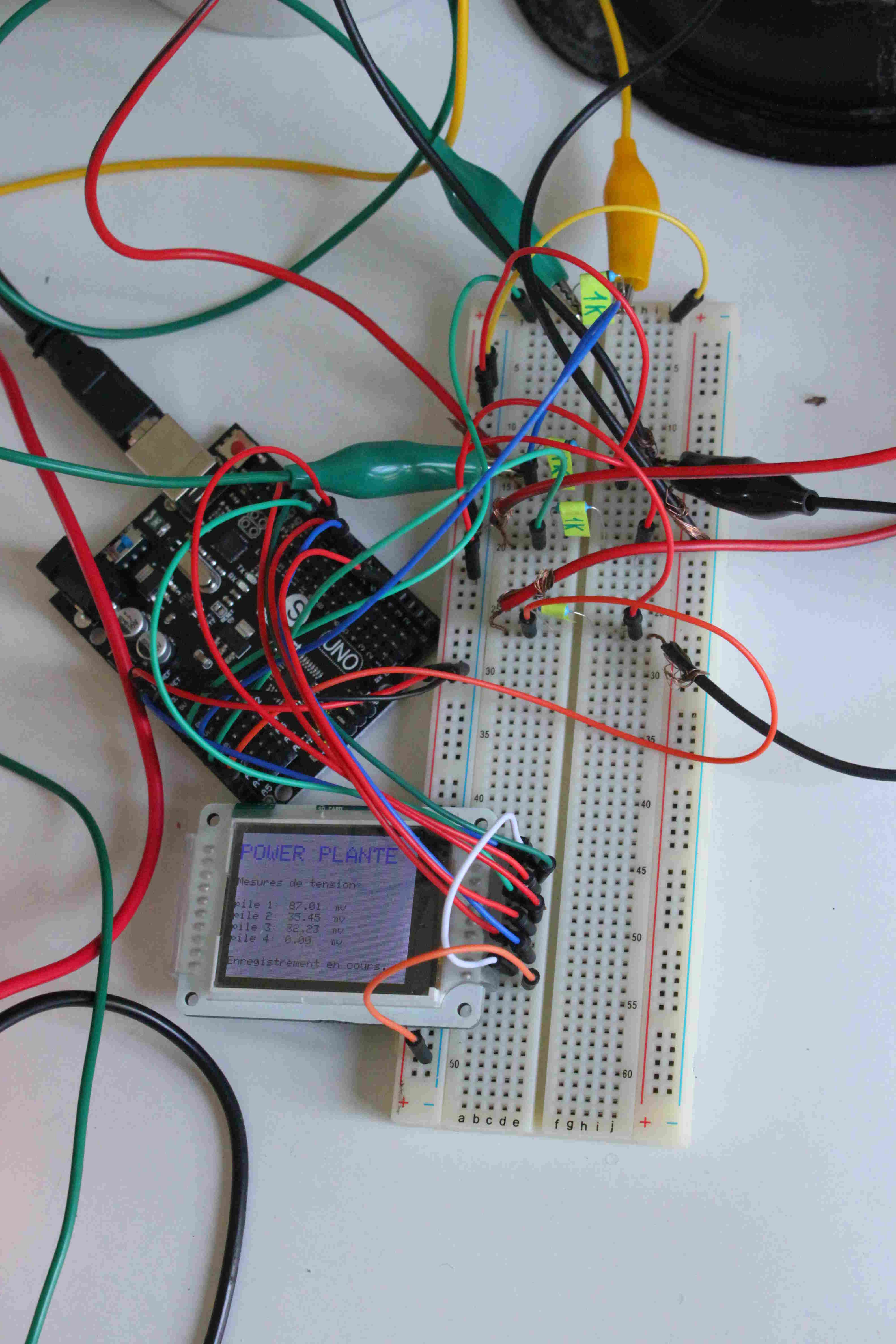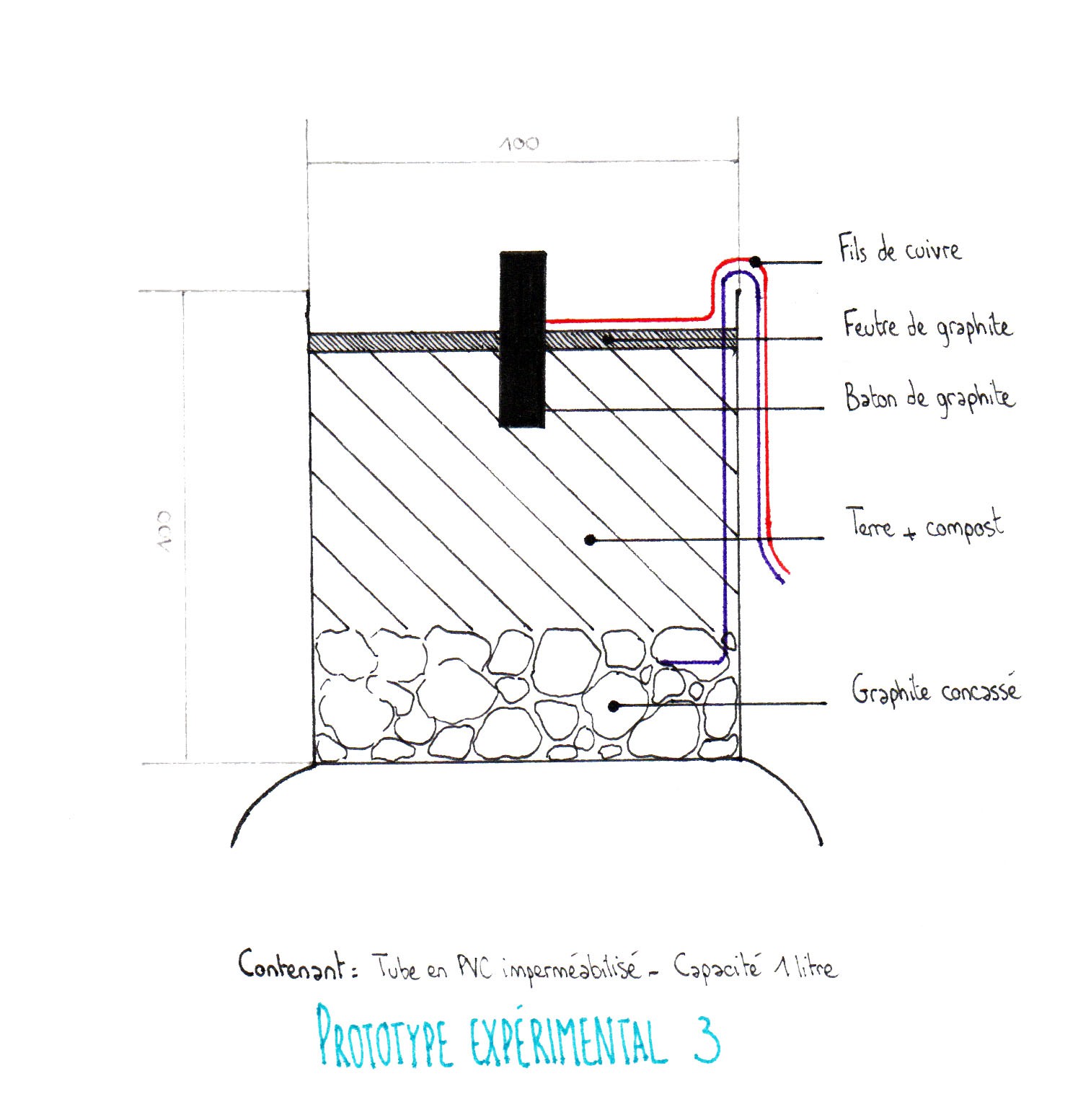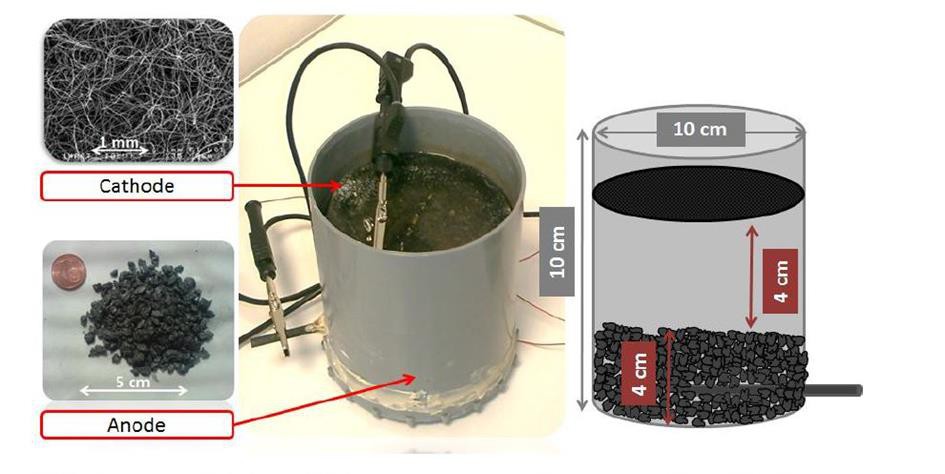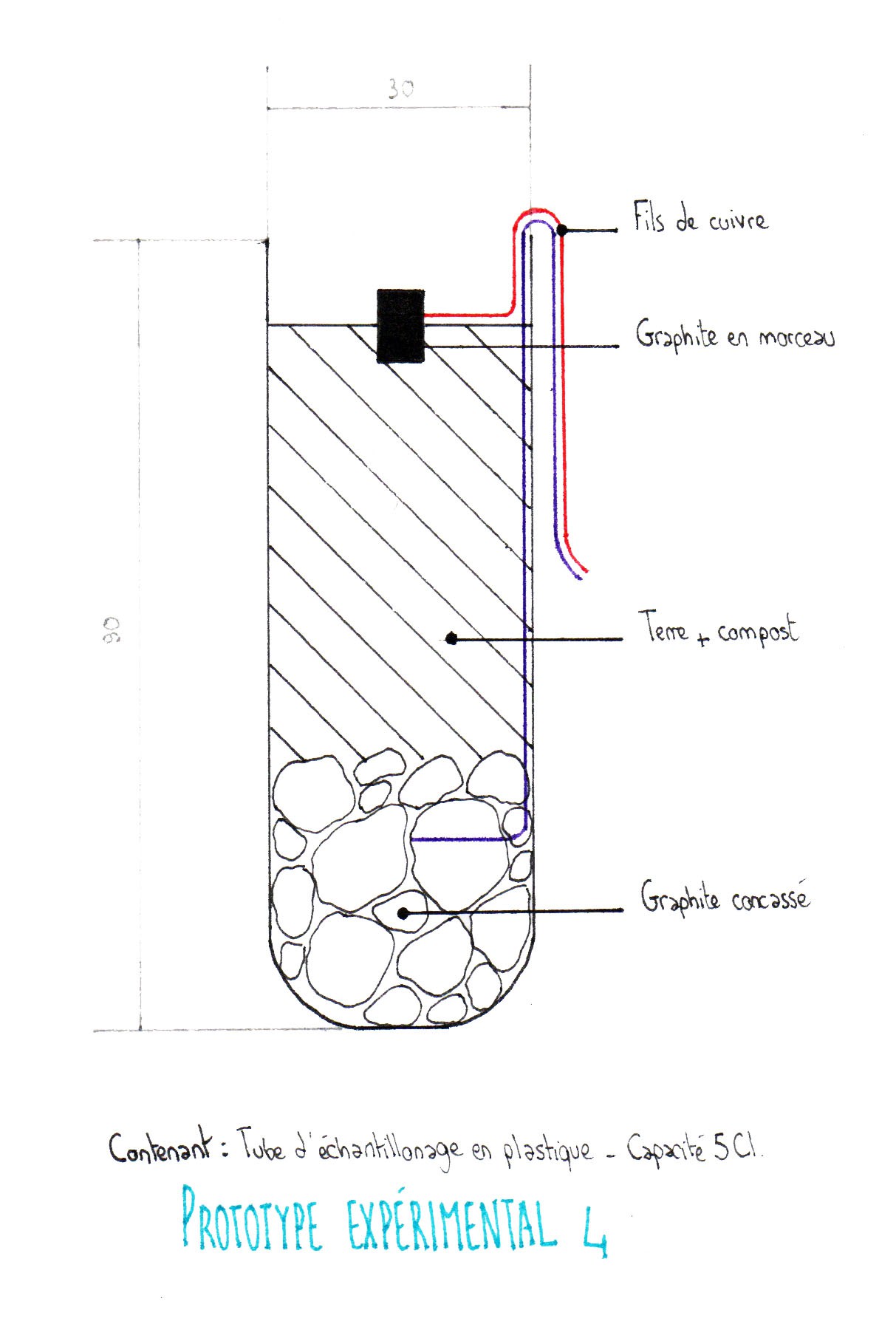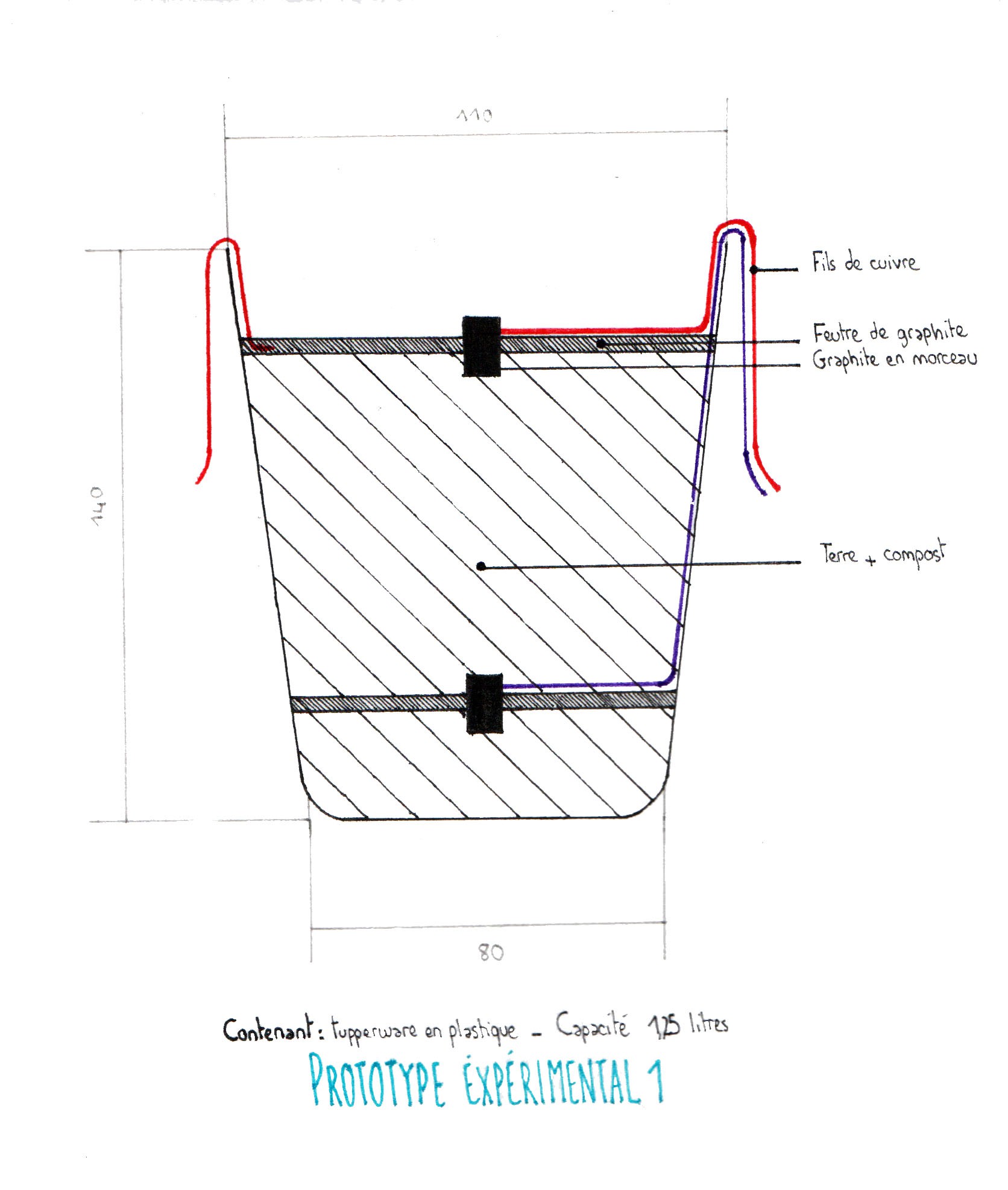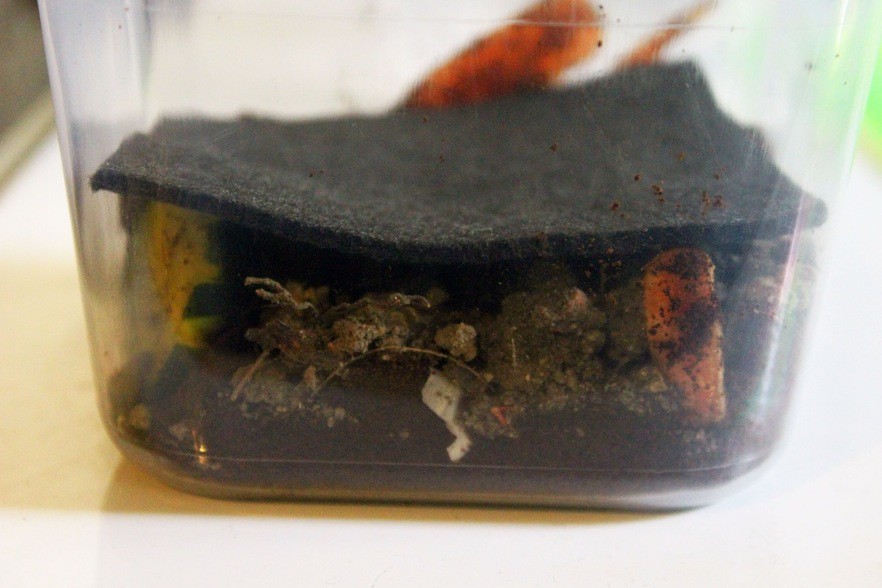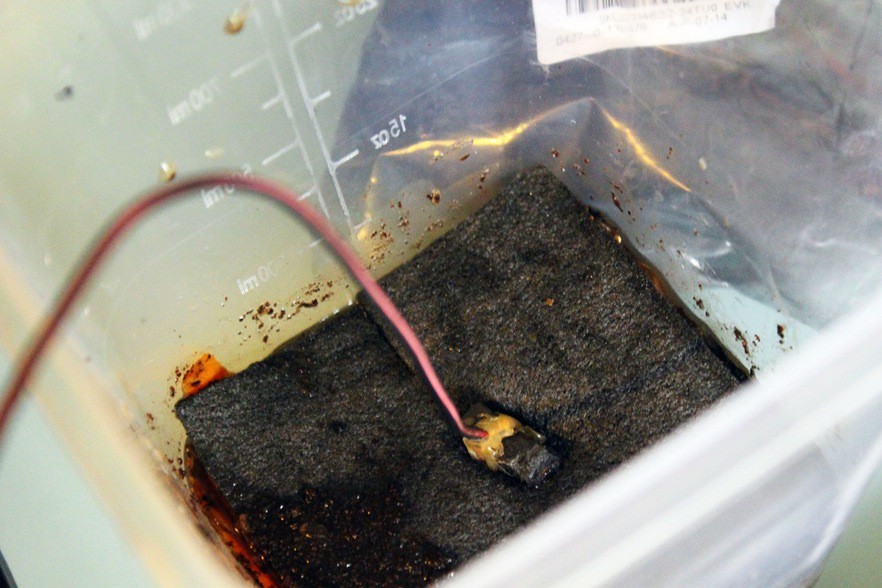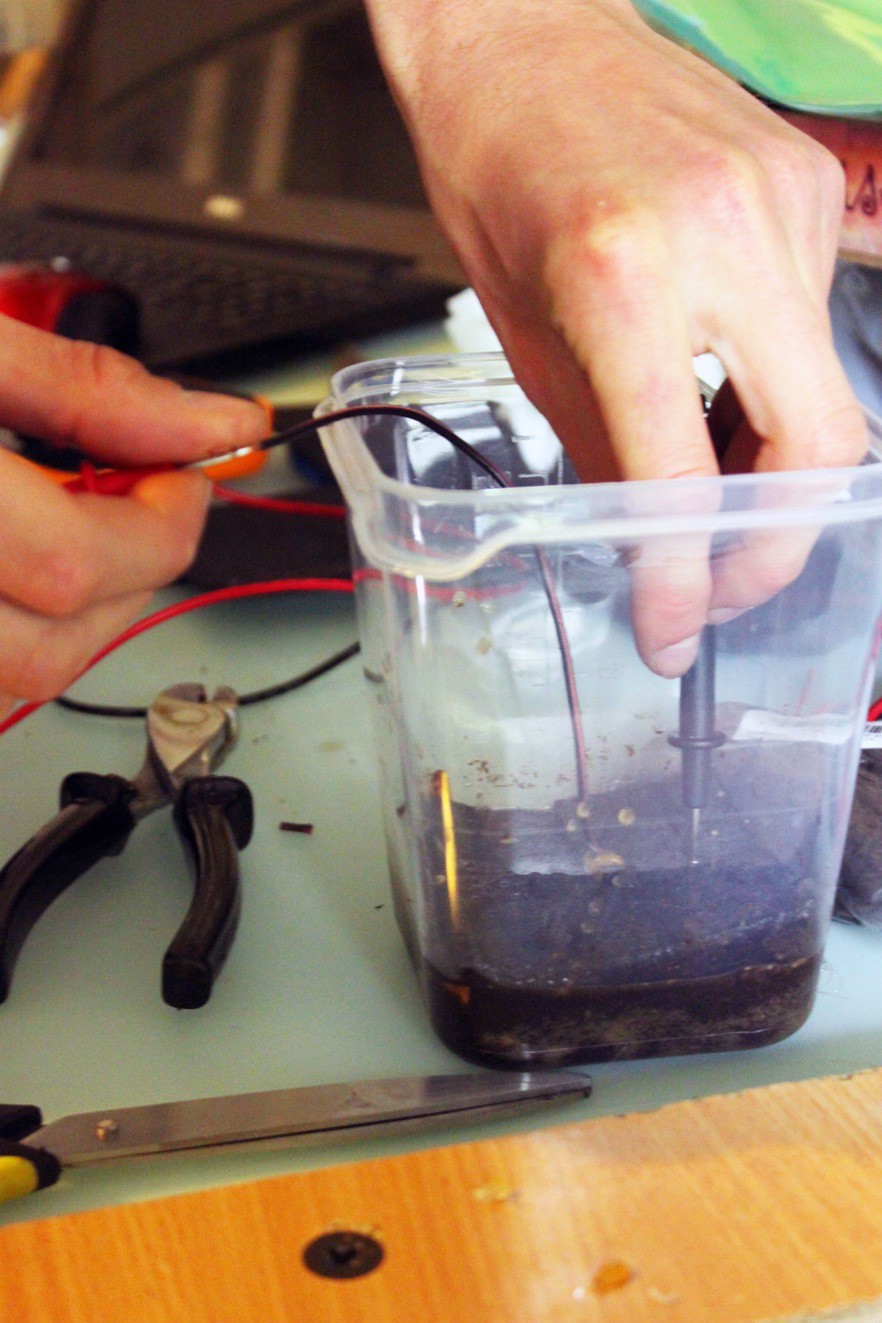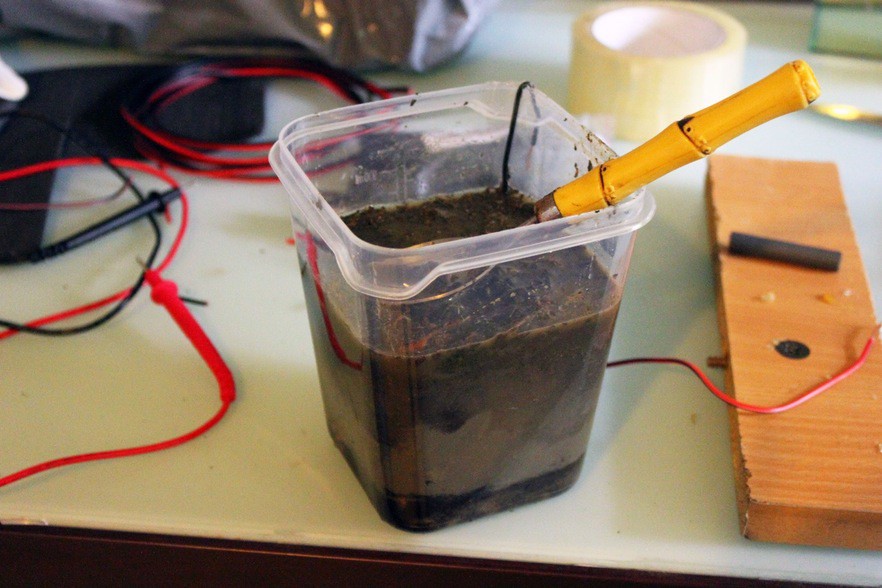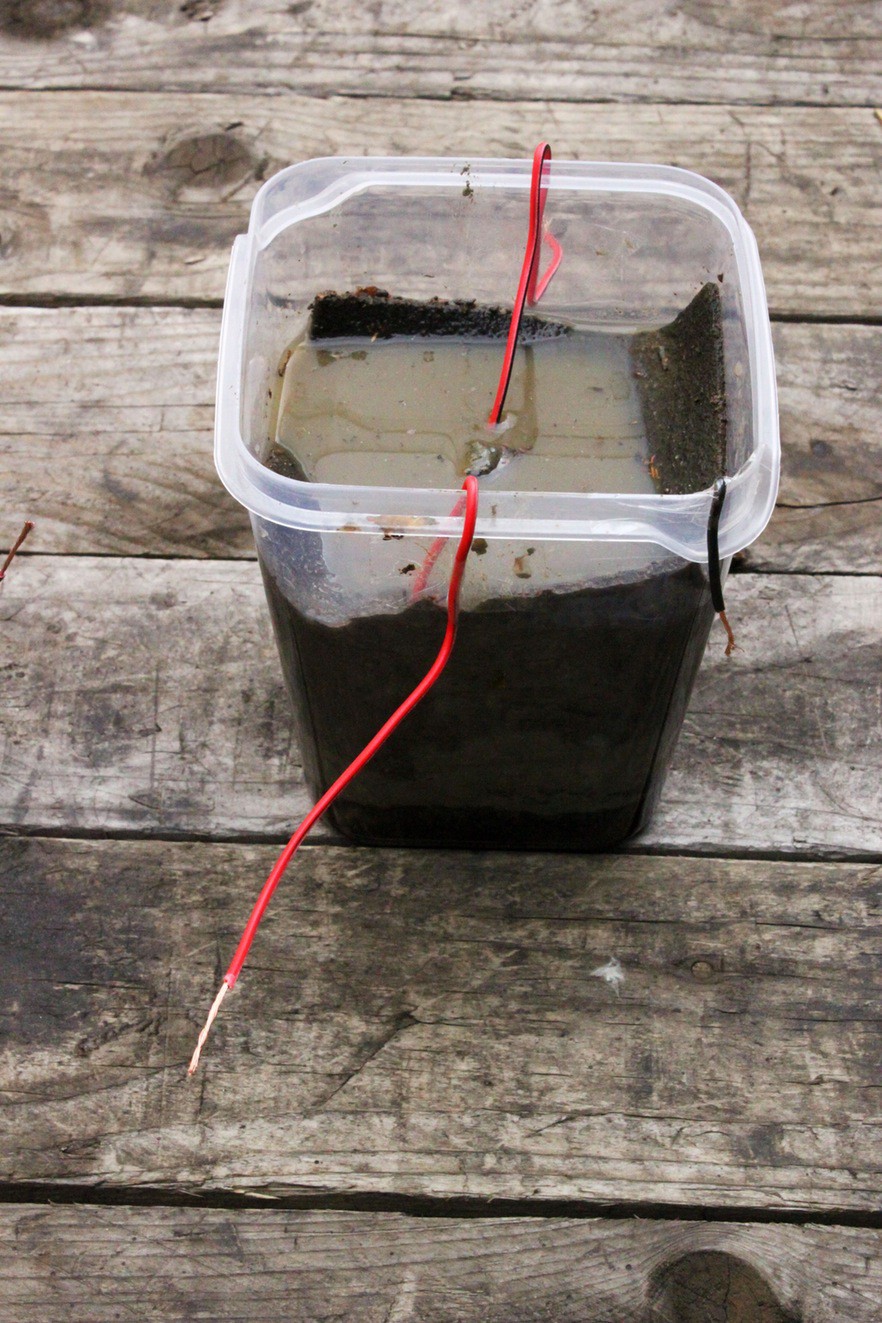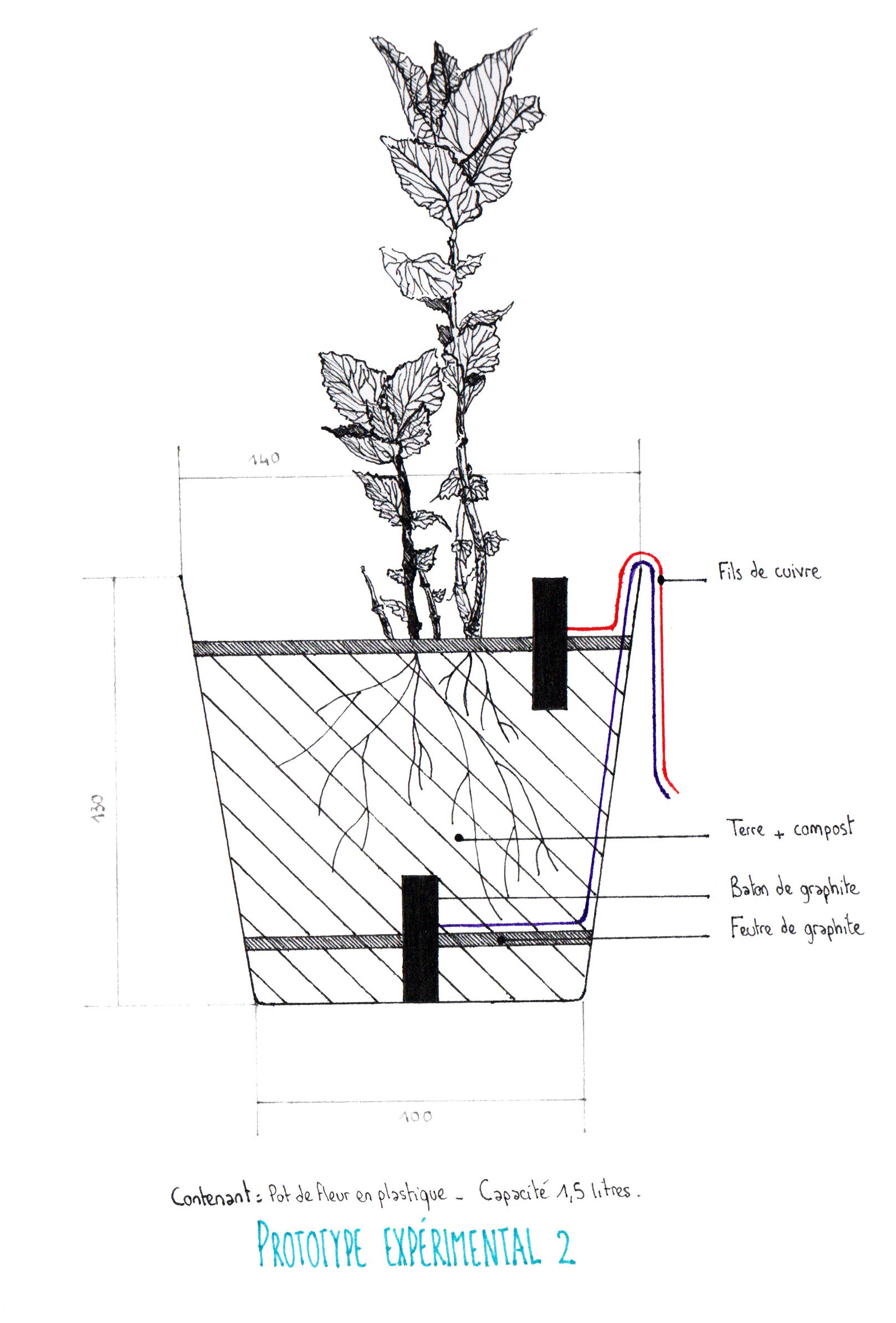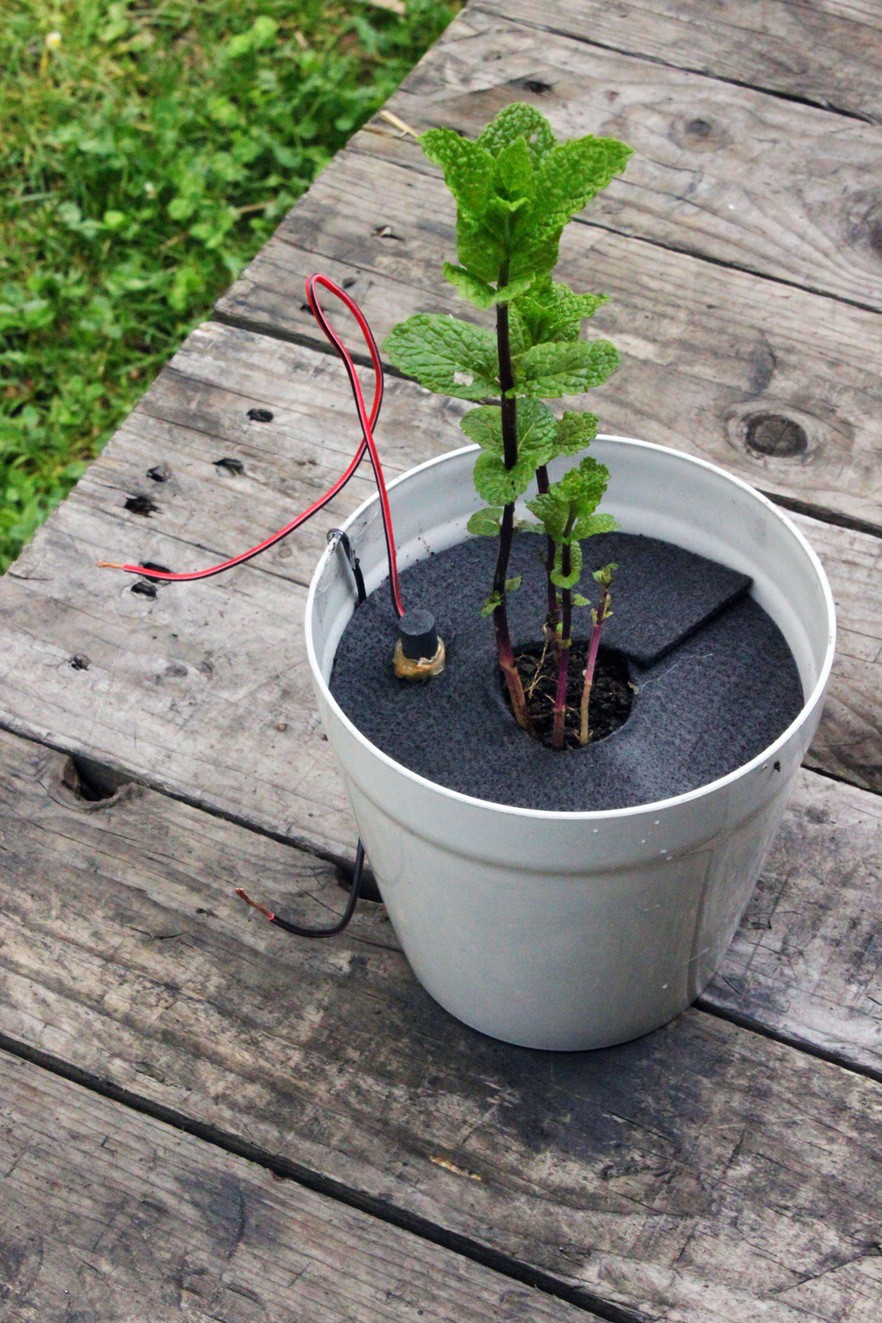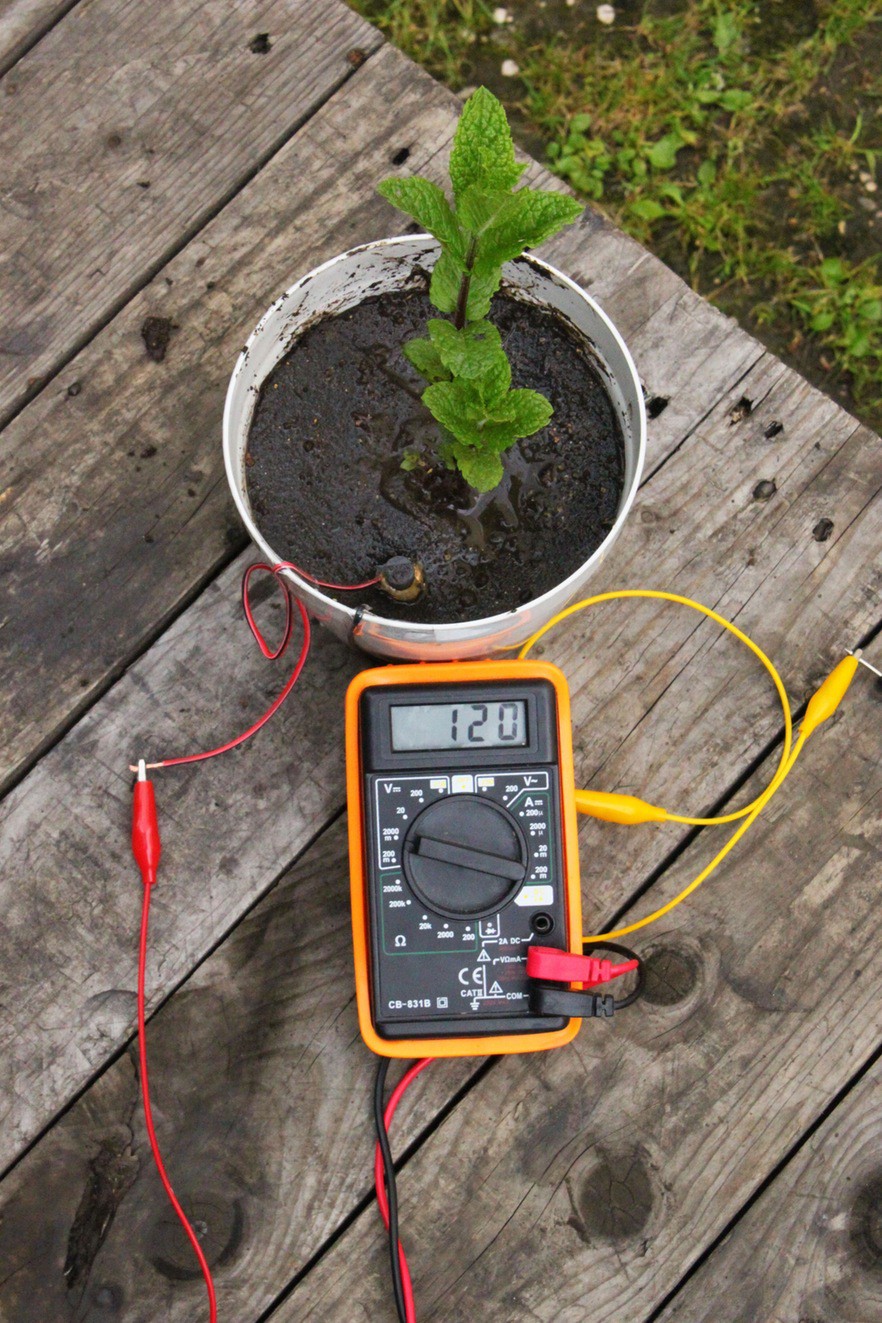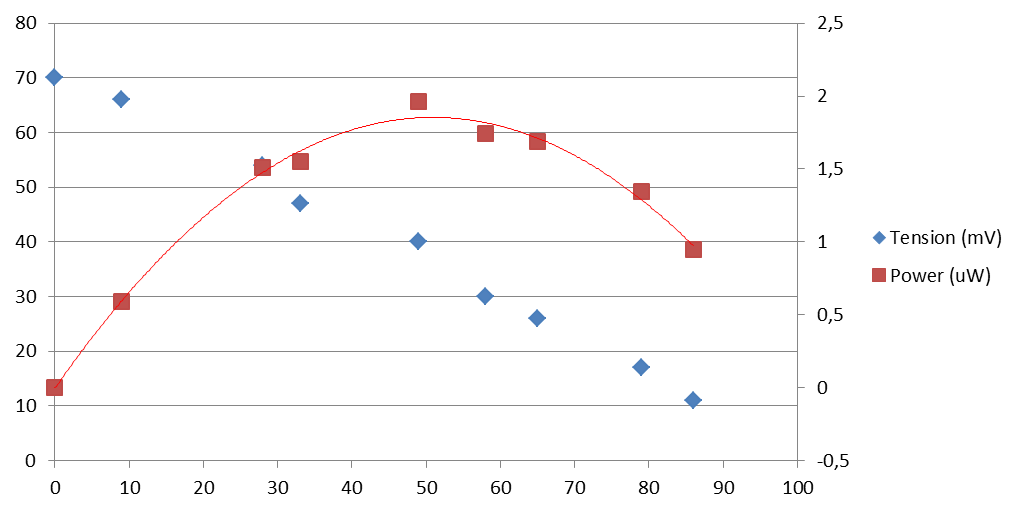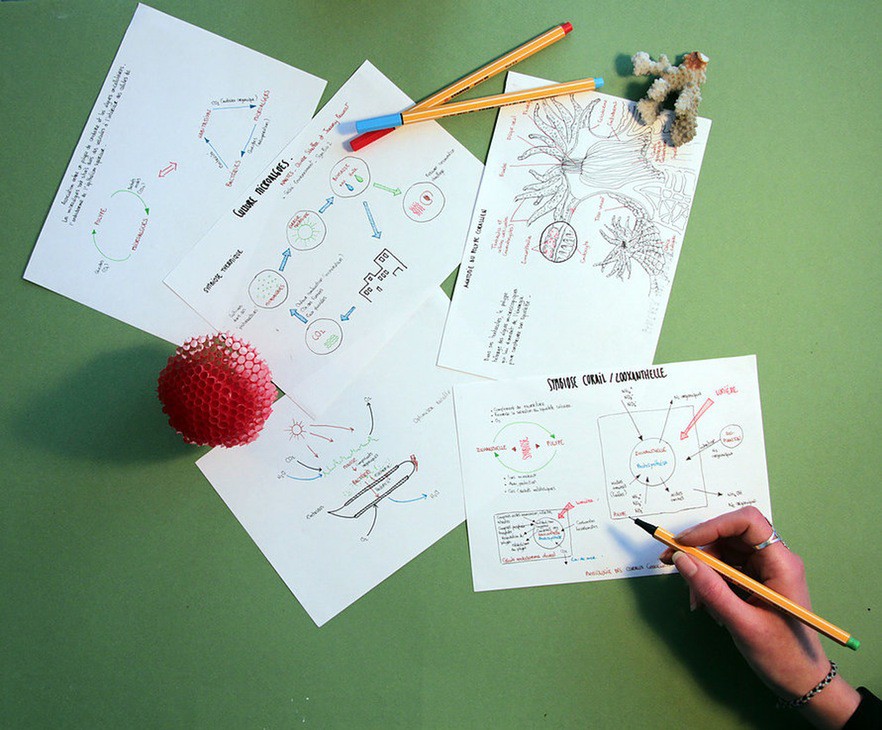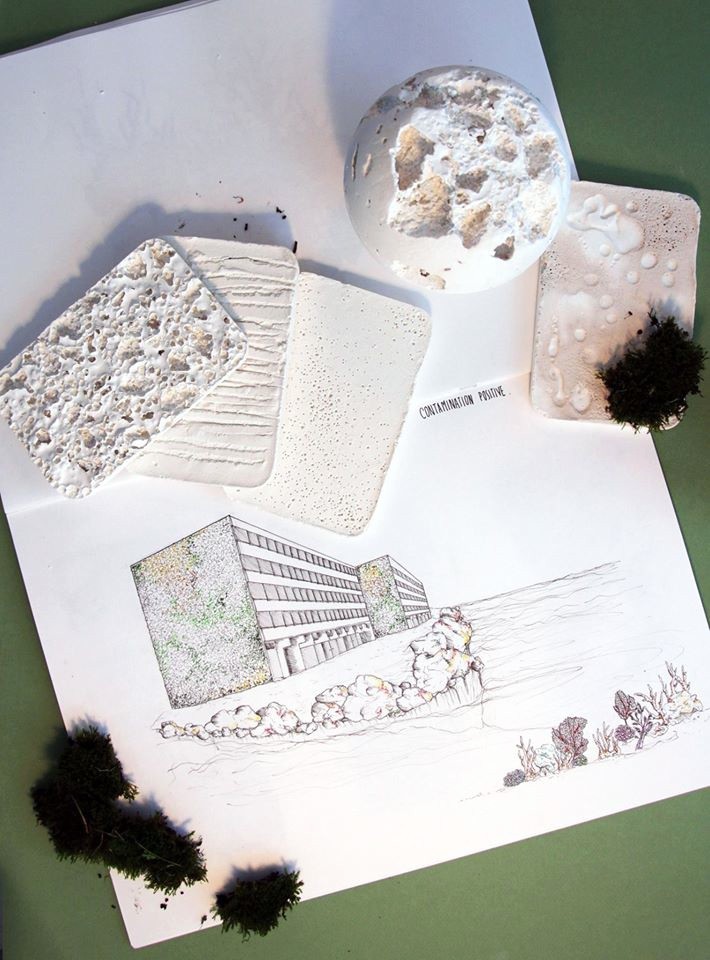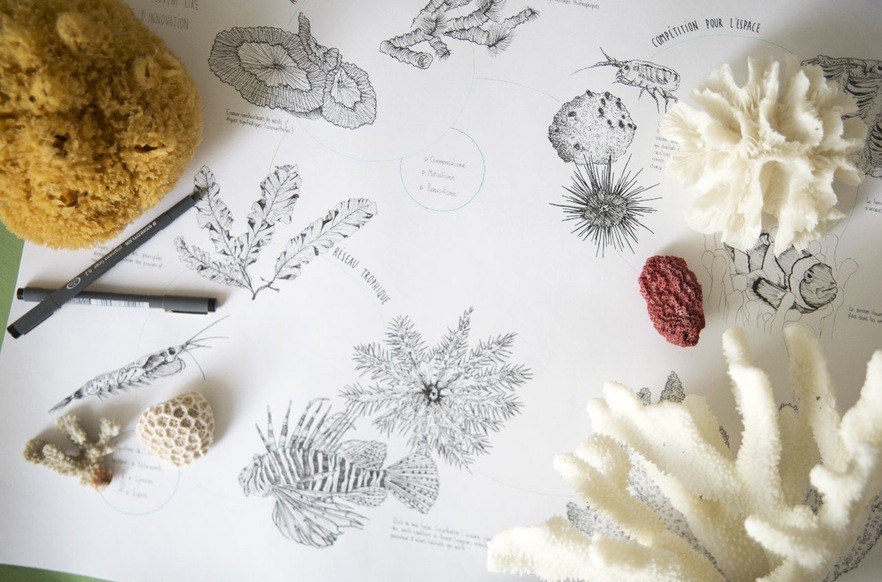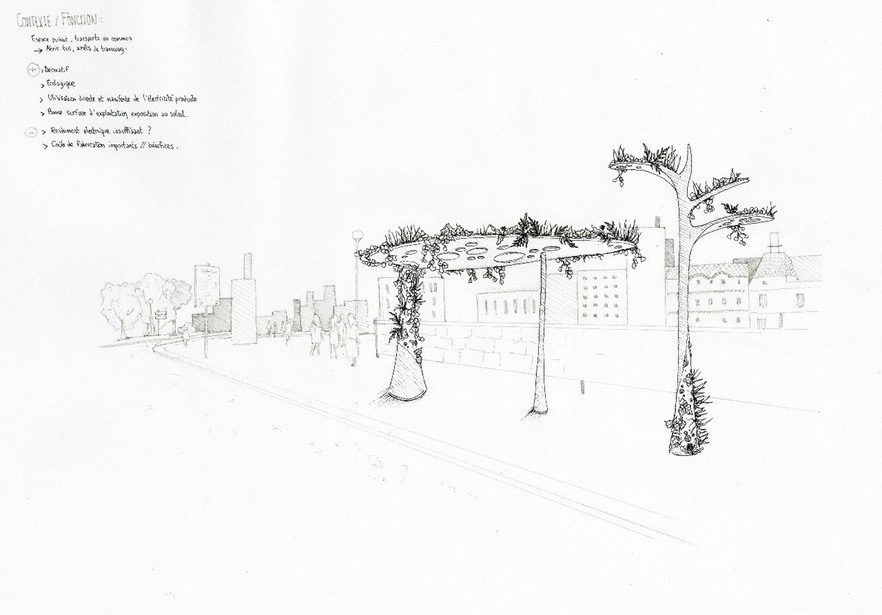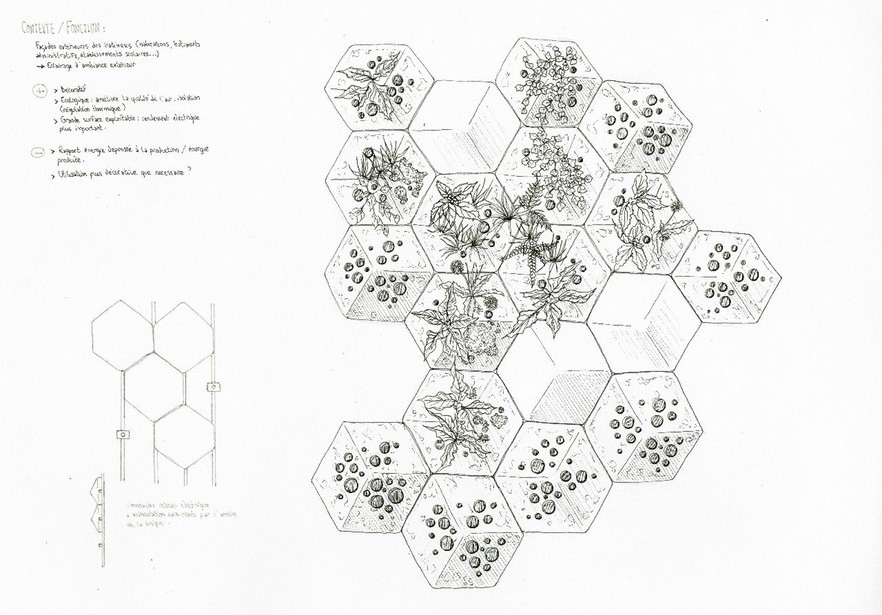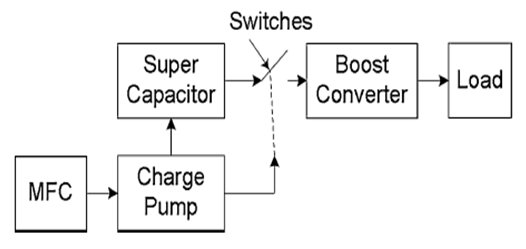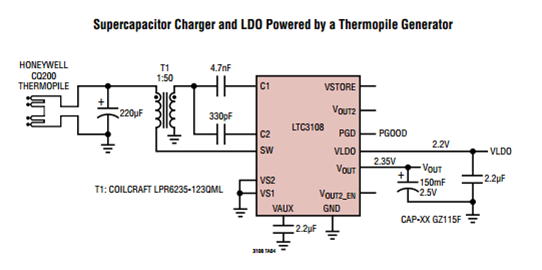-
Electrical requirements for Power Flower Pot Version 1.0
07/08/2016 at 03:41 • 0 commentsThen the design of electrical hardware version 1.0 of the project is presented. Any suggestions or implement necessary changes be annexed to this version.
Milestones to achieve in the project are:
- Increase MFC voltage rating with 2 or more cells. Today it has a voltage of 0.3 V
- Define the current range for output device (Ioad). For version 1.0 is has Vout = 0 to 4 mA
- Improve design robustness to ensure external conditions do not cause any failures.
- Optimal values for Cstore and Cout.
- Ability to control one load (switch on/off of a LED) – either to allow for greater capacity, or timing control of when the output is on or off.
Design approach:
It is in the initial stage of the project. The defined electrical hardware architecture consists of a set-up converter with the LTC3108. The design schematic diagram was made with the DesignSpark PCB program which has free license. For now the library has been built LTC3108 component with its respective footprint and encapsulation type is DFN. It proceeds to place the libraries available in DesignSpark PCB. Efficiency is key in the design, but through this device do not have optimal efficiency percentage. The primary objective is to demonstrate the power of an LED of the collected energy of a plant. Later it will be necessary to create a version 1.1 that allows to increase the current capacity in order to feed various types of electric charges.
A modular design should also make the development process a bit easier, since we can do testing onthemodules without having to test the complete capacity.
Design stages
The first steps of the design are to look at the following:
- Define of the ratio of voltage and current.
- Selection of the components. Transformer ratio, Cstore and Cout sizing.
- inductor sizing, design and its impact on efficiency
- Test of the MFC operation for energing harvesting.
Using a small step-up transformer, the LTC3108 provides a complete power management solution for power different types of load. A storage capacitor provides power when the input voltage source is unavailable. Extremely low quiescent current and high efficiency design ensure the fastest possible charge times of the output reservoir capacitor.
COMPONENT SELECTION
Step-Up Transformer
The step-up transformer turns ratio will determine how low the input voltage can be for the converter to start. Using a 1:100 ratio can yield start-up voltages as low as 20mV. Other factors that affect performance are the DC resistance of the transformer windings and the inductance of the windings. Higher DC resistance will result in lower efficiency. The secondary winding inductance will determine the resonant frequency of the oscillator, according to the following formula.
Where L is the inductance of the transformer secondary winding and C is the load capacitance on the secondary winding. This is comprised of the input capacitance at pin C2, typically 30pF, in parallel with the transformer secondary winding’s shunt capacitance. The recommended resonant frequency is in the range of 10kHz to 100kHz. See Table 1 for some recommended transformers.![]()
Table 1. Recommendation of the manufacturer for choice of the transformer.
C1 Capacitor
The charge pump capacitor that is connected from the transformer’s secondary winding to the C1 pin has an effect on converter input resistance and maximum output current capability. Generally, a minimum value of 1nF is recommended when operating from very low input voltages using a transformer with a ratio of 1:100. Too large a capacitor value can compromise performance when operating at low input voltage or with high resistance sources. For higher input voltages and lower turns ratios, the value of the C1 capacitor can be increased for higher output current capability. Refer to the Typical Applications schematic examples for the recommended value for a given turns ratio.
VOUT and VSTORE Capacitor
For pulsed load applications, the VOUT capacitor should be sized to provide the necessary current when the load is pulsed on. The capacitor value required will be dictated by the load current, the duration of the load pulse, and the amount of voltage droop the circuit can tolerate. The capacitor must be rated for whatever voltage has been selected for VOUT by VS1 and VS2.
The VSTORE capacitor may be of very large value (thousands of microfarads or even Farads), to provide holdup at times when the input power may be lost. Note that this capacitor can charge all the way to 5.25V (regardless of the settings for VOUT), so ensure that the holdup capacitor has a working voltage rating of at least 5.5V at the temperature for which it will be used. The VSTORE capacitor can be sized using the following:
Where 6μA is the quiescent current of the LTC3108, IQ is the load on VOUT in between bursts, ILDO is the load on the LDO between bursts, IBURST is the total load during the burst, t is the duration of the burst, f is the frequency of the bursts, TSTORE is the storage time required and VOUT is the output voltage required. Note that for a programmed output voltage of 5V, the VSTORE capacitor cannot provide any beneficial storage time.
To minimize losses and capacitor charge time, all capacitors used for VOUT and VSTORE should be low leakage. See Table 2 for recommended storage capacitors.
![]()
Table 2. Recommendation of the manufacturer for choice of the supercapacitor.
Storage capacitors requiring voltage balancing are not recommended due to the current draw of the balancing resistors.
Charge Pump and Rectifier
The AC voltage produced on the secondary winding of the transformer is boosted and rectified using an external charge pump capacitor (from the secondary winding to pin C1) and the rectifiers internal to the LTC3108. The rectifier circuit feeds current into the VAUX pin, providing charge to the external VAUX capacitor and the other outputs.
The PGD signal can be used to enable a sleeping microprocessor or other circuitry when VOUT reaches regulation, indicating that enough energy is available for a burst.
-
Step-up converter architecture able to harvest energy from low-voltage.
07/08/2016 at 02:59 • 2 commentsEnergy harvesting is the process by which energy is captured from environment and stored or used to feed low-power circuits (e.g. LED lighting a lamp). It is an alternative to environmentally harmful and life-limited batteries in embedded systems. Kinetic, thermal, solar, and electromagnetic energy can be transformed into electricity using appropriate harvesting transducers (respectively piezoelectric, thermoelectric, photovoltaic and microbial fuel cell).
Energy harvesting from ambient sources can offer a sustained source of power, suitable for many applications. Yet the output from available energy storage devices and transducers, used to extract that energy, can fall below levels suitable for typical components. In building efficient energy-harvesting designs, engineers can draw on available boost converter devices able to operate with input voltages well below 1 V, offered by manufacturers including Intersil, Linear Technology, Maxim Integrated, Microchip, and Texas Instruments, among others.
Ambient energy sources pervade the environment, yet typically provide a trickle of power at microwatt levels (Figure 1). In a typical energy-harvesting design, transducers needed to convert solar, mechanical, thermal, or RF energy consequently might produce hundreds or even just tens of millivolts on a consistent basis. Many DC/DC converters, such as those designed for use with multicell battery sources, offer high-efficiency operation, but could easily require input voltage levels above the levels generated in typical energy-harvesting applications. Other specialized boost converters are able to operate from low input voltages – maximizing energy extraction and delivering sufficient power to enable operation of application circuitry from even the weakest sources of ambient energy.![]()
Figure 1: Common ambient energy sources are estimated to yield power at microwatt levels. (Courtesy of Texas Instruments.)
Low-voltage input devices
Designers can find a variety of boost converters designed to operate with voltage sources below 1 V. The LTC3108 is the most appropriate for our project. By working with MFC it entails that have obtained a few millivolts for Vin. The LTC3108 offers a minimum operating voltage of 20 mV. The device requires only a few additional components, including a transformer specified with ratio: 1:100, 1:50 or 1:20 and achieves efficiency values ranging from 20 percent to mor than 80 percent, depending on input voltage and output current (figure 2).![]()
Figure 2.
The LTCR3108 is a highly integrated DC/DC converter ideal for harvesting and managing surplus energy from extremely low input voltage sources such as TEGs (thermoelectric generators), thermopiles and small solar cells.
Using a small step-up transformer, the LTC3108 provides a complete power management solution for wireless sensing and data acquisition. The 2.2V LDO powers an external
microprocessor, while the main output is programmed to one of four fixed voltages to power a wireless transmitter or sensors. The power good indicator signals that the main
output voltage is within regulation. A second output can be enabled by the host. A storage capacitor provides power when the input voltage source is unavailable. Extremely
low quiescent current and high efficiency design ensure the fastest possible charge times of the output reservoir capacitor.Able to operate with input voltages below 1 V, specialized boost converters play a key role in energy-harvesting designs. Using switching topologies and minimal external components, these devices step up low voltage levels from transducers and energy storage devices to levels required for application circuits. By taking advantage of available boost converters, engineers can design highly efficient energy-harvesting applications able to maintain full operation despite the very low voltage levels often available from ambient energy sources.
Based on the theoretical approach presenter achievement here is to design the block diagram to achieve the objectives of the project Figure 3. Block diagram of project.![]()
-
20/06/2016: Tests with a charge pump circuit
06/29/2016 at 02:27 • 0 commentsWe just receive the DC/DC converter we bought on the internet!
The chip integrate an LTC3108 and a small 1:100 transformer from coilcraft. It should be able to operate with voltages as low as 20 mV and produce a stabilized 5V output. It also integrates a storage capacitor.
But after cabling it to our Mint MFC, big deception L… When plugged to the card, the voltage at the terminal at the MFC dropped from 500 mV to 20 mV, and we only got an output of Vout =100 mV, and Vstore = 40mV across the storage capacitor…
Until now, we didn’t find what was wrong with the cabling. The most probable is that the components on the board are over-dimensioned for our MFC, as this converter was made for thermal applications such as harvesting energy from a peltier element.
As we didn’t find any commercial chip fitting our application better, and we don’t have the infrastructure to build one ourselves, we will probably have to contact some industrial to have one custom made. So the next step will probably be to model the circuit (on Pspice for ex.) …
-
23/06/2016: Results and analysis
06/29/2016 at 02:22 • 0 commentsHere are the measures we took. We checked the voltage every 2 or 3 days, so we don’t have a high precision, but it’s enough to have an idea of the evolution.
08/06
19h
10/06
14h
14/06
14h
16/06
17h
20/06
11h
23/06
16h
MFC 1
146 mV
20 mV
29 mV
8 mV
-9 mV
-90 mV
MFC 2
150 mV
189 mV
341 mV
99 mV
200 mV
572 mV
MFC 3
80 mV
25.8 mV
70 mV
80 mV
0 mV
MFC 4
30 mV
25.8 mV
5 mV
35 mV
- MFC 1
The first MFC was giving good results at the beginning but after some time, the voltage totally dropped and even reversed. It’s possible that the copper wire we put directly into the electrode killed the bacteria inside the MFC. Indeed, copper is known for its anti-microbial properties. Or maybe there is a bad connection somewhere, probably at the anode side.
Therefore, while connecting the wire to the electrode, it’s important to assure that the connection is robust enough and can hold for weeks in a soil. It’s also important to isolate carefully the wire to avoid any contact of the copper wire with the soil. An alternative way would be to use stainless steel wire for connecting the electrodes.
- MFC 2
The second MFC, was the one including a mint plant, and gave very good results. The plant was doing fine until we moved down the pot to the basement where there is little light.
- MFC 3
The seal we made at the bottom of the 3rd MFC didn’t hold, and the MFC start leaking after a few days. The anode probably got oxygenated and the MFC gave very poor results, so we will have to do this test again.
- MFC 4
It’s hard to evaluate the results given by the fourth MFC, as they fluctuate a lot. The expected voltage seems to be around 20-30 mV, but the measurement uncertainty is so high that we cannot use these values. It appears that small MFC are not convenient for running tests, and that small or medium MFC are more adapted.
Common observations
The values we measured are very instable, and can vary a lot according to:
- The level of water in the recipient.
Water increases ionic conductivity but can also block the oxygenation of the cathode if too much water is poured. It is necessary to add water to the MFC to compensate evaporation, but the values are significantly different if measured before or after watering. Therefore it would be necessary to define an amount of water to pour regularly, and a protocol for measuring.
- Electrical connection.
We used a bread board to connect our MFC to a resistor and take measure. But touching the wire while measuring, we realized that this influenced a lot the measure. Moreover, the internal resistance of the MFC is low ( ≈ 100 ohm for the mint MFC), and the resistance of the wires might have a big influence. So, we will have to find a way to avoid bad connection. Maybe soldering the wire would be a solution.
-
16/06/2016: Measuring data with an Arduino board
06/29/2016 at 02:12 • 0 commentsTo have regular data, without having to measure manually, we thought about using an Arduino chip. We made a little circuit with an arduino uno chip, and a TFT screen that were available in the lab. Each MFC is measured by an analog input of the chip, the results are then shown on the screen and stored in a SD card associated to the screen.
Analog input on arduino uno is using 1024 bit for CAN conversion. Therefore, the precision on the measure will be: Vcc/1024. To be as precise as possible, we use a 3.3V power supply, and therefore the precision on the measure is 3.22 mv. This is pretty imprecise, if we have to measure values of 10 – 20 mv, then the imprecision represent 15-30 % of the measure.
Furthermore, for some unknown reason, the value measured with the arduino chip is always 7mV lower than the value measured with the voltmeter.
Additionally, we don’t know how the chip interacts with the MFC, and if leakage currents are injected in the circuits.
And finally, we didn’t manage to display the time on the arduino chip. So, until now, the chip is not fully operational, because it registers only raw data, without the time and date associated. For the future, we have several option:
- Get some help from experienced programmers and integrate the time libraries
- Get an arduino clock module
- Or find a multi-meter that can be connected through an USB port.
-
10/06/2016: Second prototyping session
06/29/2016 at 01:08 • 0 comments3rd Prototype:
![]()
This prototype is a reproduction of the fuel cell described in the article “A single sediment-Microbial Fuel Cell powering a wireless telecommunication system” (see attached files). This way, we will be able to compare our results with the one obtain in a laboratory, and then have a reference to compare our different test between themselves.
Here is a picture of the original experiment, extracted from the article:
![]()
Container: 10 cm diameter PVC tube, 10 cm high. We closed the tube at the lower end by pasting a plastic cup and sealing it with pipe dope.
Anode: we didn’t find any graphite granules, so we mashed some graphite plate to obtain a similar material. But probably, the surface of the electrode in contact with the soil is smaller in our fuel cell than it is in the one of the article. The layer of mashed graphite is about 40 mm thick.
Cathode: graphite felt, 5 mm, diam 10 cm. 40 mm distance from anode.
Soil: mix of compost, vermicompost, and earth.
Connection of the electrode to the wire was made like we did before for proto 1 and 2, except that we used wax resin for isolation (we didn’t have any more thermo glue).
4th prototype: mini tube
![]()
For the 4th prototype, we used a small test tube as container. The idea is to use this tube as a reference and then make a batch of 5-10 test tube to test different design. For example, we could compare different anodes, cathode, soil… We could also make several similar MFC, verify that we get the same results and then put them in serie or parallel.
Container: test tube, 30 mm diam, 90 mm high, spherical bottom
Anode: mashed graphite, same as proto 3, 40mm
Cathode: graphite felt, 5 mm thick, 20 x 20 mm.
Connection of the wire was made with same technique as before, using wax as isolation.
Soil: mix of compost, vermicompost, and earth.
Measures:
We measure around 100mV across a 1Kohm resistor for MFC 3, and 20-30 mV for MFC 4. Considering the size of the MFC, this look pretty normal.
For long term measure, we keep all the MFC plugged to a 1Kohm resistor, and we will measure the voltage this resistor. This way, we don’t need to open the circuit and are able to take measures without disturbing the system.
We will try to measure the voltage produced by the MFC regularly
-
01/06/2016: First prototyping session
06/29/2016 at 00:37 • 0 commentsFirst prototype:
![]()
Anode: graphite felt, 5mm thick 80x80 mm
Cathode: graphite felt, 5 mm thick 110x110 mm
![]()
For both Anode and cathode, connections are made with a carbon block stuck into a slot in the graphite felt. The carbon blocks come from a washing machine motor and measured approximately 15x5x5 mm.
![]()
The wires (copper) were connected to the carbon blocks by wrapping them around the blocks. We, then, surrounded the wires with thermo-glue to isolate them from the fuel cell and avoid any side reactions.
![]()
To test the influence of side reaction on the measures, we connected a second wire (copper) to the cathode, by directly stuffing it into the graphite felt, without any isolation.
![]()
The soil is composed of earth from the garden, coffee grounds and vegetable peel from the compost.
![]()
The first measures show similar results for both connection method: around 200 mV (with open circuit)
Second prototype: Mint Fuel Cell
![]()
Anode: graphite felt, 5mm thick, diam 95 mm,
Cathode: graphite felt, 5 mm thick, inner diam 35 mm, outer diam 120mm
Electrical wires (copper, same kind as for proto 1) are wrapped around graphite sticks (50mm long, 8mm diam) and covered with thermo-glue. We then fixed the graphite sticks to the graphite felt by sticking them into a slot made in the felt. The connection method is the same as for proto 1, except that we are using graphite sticks instead of old carbon electrode.
The soil is composed of earth from the garden, and fresh compost, like proto 1. We added a little mint plant to our fuel cell to see if the plant could survive in our fuel cell.
![]()
![]()
![]()
Polarization curve:
For the mint MFC, we have the following polarization curve:
Current (uA)
Tension (mV)
Power (uW)
Req (ohm)
0
70
0
9
66
0,594
7333,333
28
54
1,512
1928,571
33
47
1,551
1424,242
49
40
1,96
816,3265
58
30
1,74
517,2414
65
26
1,69
400
79
17
1,343
215,1899
86
11
0,946
127,907
Therefore, we have the maximum power production when the load is around 800 ohms.![]()
Furthermore, we observed, on both prototypes, that the open circuit tension decreases quickly when we measure it. It seems that the fuel cell discharge when we connect a voltmeter. To be able to compare the results, we decided to measure most of the voltages across a 1 k resistor.
-
08/06/2016: Contacts and invasion plan
06/29/2016 at 00:15 • 0 commentsContacts
evolve on the project.
Michka, bio-engineering, and Guillian, designer, are collaborating on different projects and offered us their experiences and multidisciplinary methodologies. Michka, who also did experiments on microbial cell, regularly shared his findings, discoveries and discussions (yields, data capture, tests on the electrodes ...). Guillian brought his design skills to the project (thinking about contexts, applications, production...).
Paul is travelling in France to meet, gather and create links between actors of biomimicry. He is particularly interested in reconciliation between human technologies and plants. Beyond his active participation on some experiments, he also allows us to have a more concrete vision of the project that develop around these issues.
After being contacted by Johann for micro-processors samples, a commercial of the company came to "La Myne," curious to learn more about the project and the specific context in which it develops. He gave us several precious advises and are willing to keep in touch with us, to assist us in case of technical need.
Raphaël came to us to give a hand on the project. He allows us to move forward, using new skills he brings.
We solved some points on which we were stuck thanks to Elie, who perfectly knows the subject. He brought us a lot of information and material references.
More specifically, he advised us to use some graphite felt as electrodes, some stainless steel wire for connection, and some compost as soil. He also told us that using a membrane could be counter-productive because it might lower the current.
Julien worked for several months on a microbial cell prototype inspired by Bruce Logan's work. He shares our desire to transmit our respective advancements and visions of these projects based on the same principle (the microbial cell) to evolve together.
Invasion plan
To begin to work together effectively, we have defined an "invasion plan" (objectives and steps for the bacterial cell). It consists of :
- Contact biology students potentially interested to work on the project.
- document the project to open it for everyone who wants to work on it.
- List materials to buy / collect for a successful prototype
- Establish more precisely the protocol, and the prototypes' design :
-
02/05/2016: A polype-designer arrives at La Myne
06/28/2016 at 23:05 • 0 comments![]()
vegetated wall, integrating microbial fuel cell and producing electricity. This project was born from a collaboration between EESAB and UBO (University of Brittany) universities around a general theme: "marine bio-inspiration for the transition."
![]()
Until now, she has been working mainly on the state of the art and the concept, analysis and contextualization of the project but found herself blocked by the lack of knowledge in the fields of biology and electronics to continue the project more concretely.
So naturally she joins
![]()
The depletion of fossil energy resources (oil, coal ...), associated with the pollution caused by their use, now poses the question of energy production, from renewable and cleaner processes.
![]()
Based on the functioning of ecosystems, including the symbiotic relationship between coral polyps and unicellular algae (zooxanthellae), "Élec-GREEN-City is made on this context. The objective, is to develop a source of energy based on plants, with minimal human intervention.
![]()
If fuel cells with plants already exist, this project goes further. It is part of a sustainable development approach, that ultimately aims to establish a vertical system, such as a green wall. This system, installed on buildings, would be able to:
- produce energy,
- take advantage of insulating properties, heat regulation and air quality improvement that allows the green walls,
- recycle the wastewater (used for plant growth).
![]()
-
08/04/2016: Design Your Concept
06/28/2016 at 13:24 • 0 commentsFor this first challenge, we imagined an application of the Power flower pot, as a family of object. It includes a bedside lamp, a reading light or a desk lamp.
![]()
![]()
Design
The Power Flower Pot design intents to maximized electricity production by reducing the distance between the anode and the cathode and optimizing the surface of the electrode..
We also tried to combine several functionalities in a single objet:
- A flower pot, producing energy and adapted to receive a plant
- A flexible LED Lamp providing light
- A tablet, that can be used as a shelf
- In some further designs, it could also integrate a USB port for charging remote devices
![]()
Energy production
For similar design, studies (link) showed an electricity production of around 300 mV for 8 mA, with a maximum power of 2.5 mW. Based on this data we are expecting an energy production of 50mW*h in 24h, which would be enough to power 2 low power LED (22mW) during 1h.
Prototyping
For the first prototype, we were thinking of using a charge pump circuit to increase the voltage from 300mV to 3-5V and a super capacitor to store the energy.
![]()
We were also thinking of using a 1:20 transformer and a LTC3108 to charge a supercapacitor, as shown in the electrical drawing with the thermopile generator.
![]()
Thank you for reading. And if you want to help us, we’ll be glad to have your feedback on this project! :)
Power Flower Pot: plants, electricity, and light
Reconcile technology and nature, harvest the extra energy produced by plants!
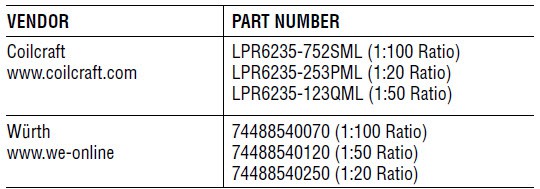
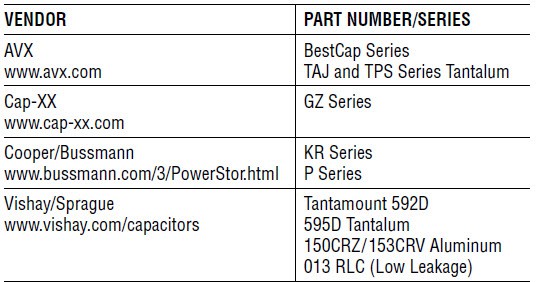

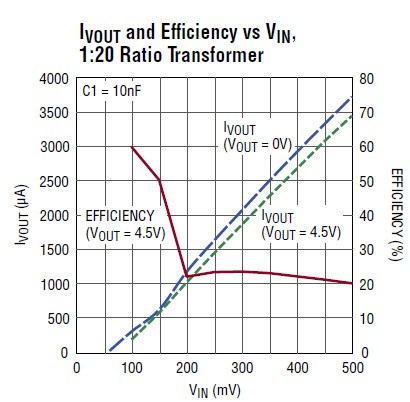
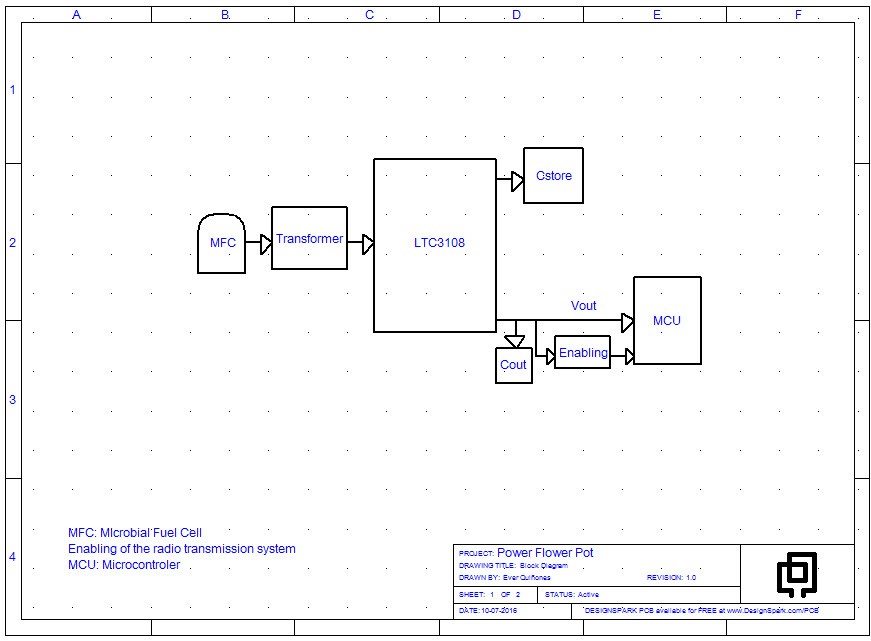
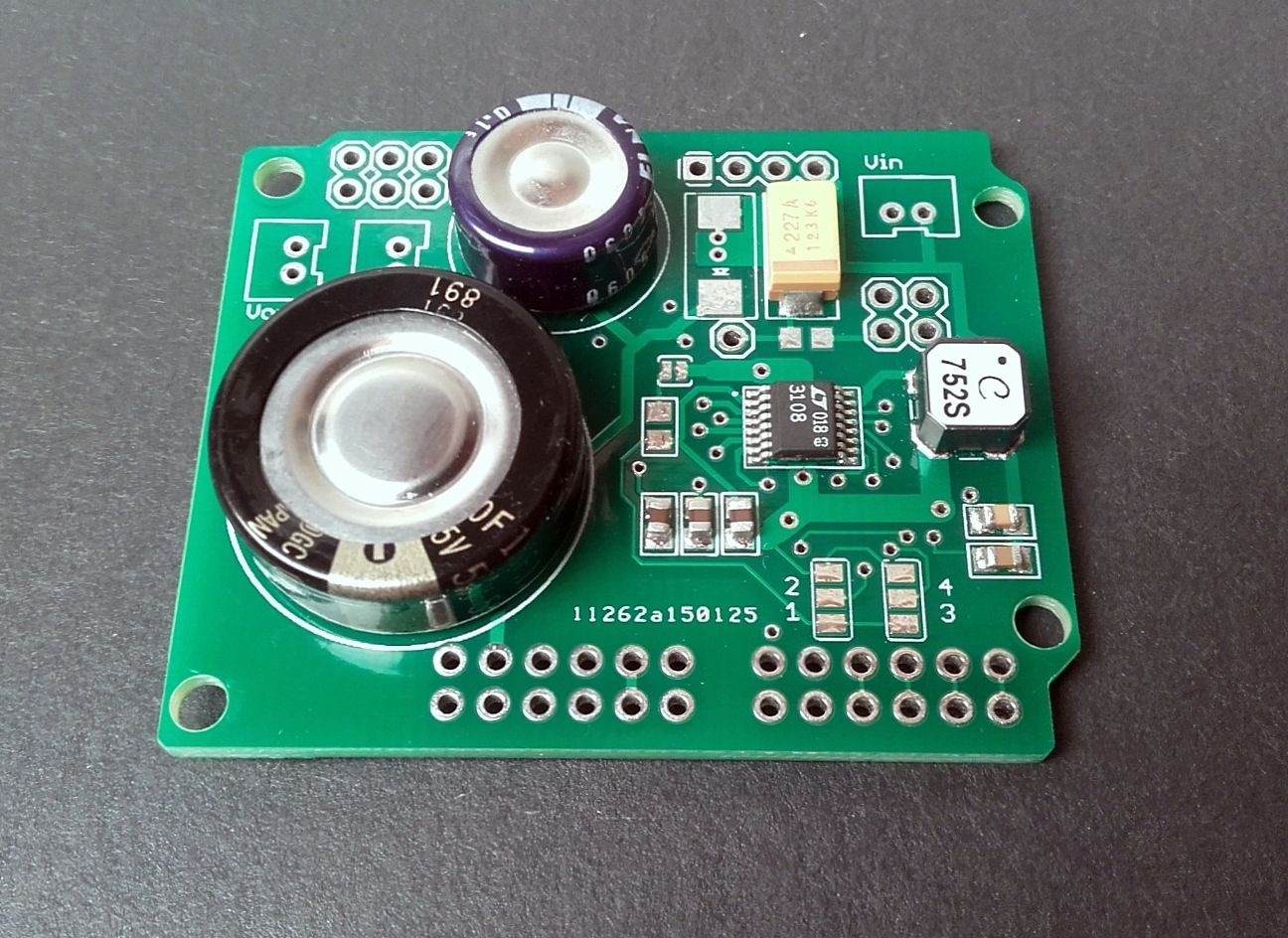
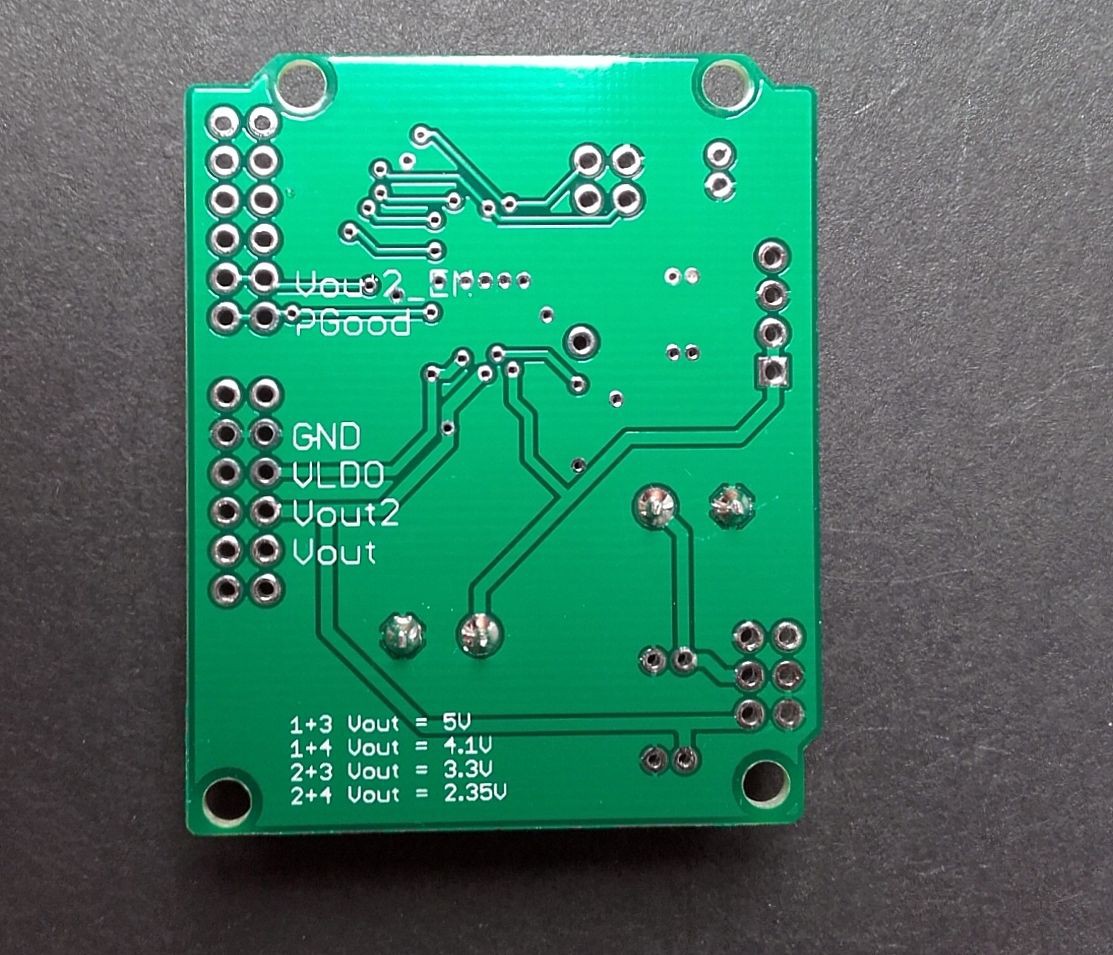 But after cabling it to our Mint MFC, big deception L… When plugged to the card, the voltage at the terminal at the MFC dropped from 500 mV to 20 mV, and we only got an output of Vout =100 mV, and Vstore = 40mV across the storage capacitor…
But after cabling it to our Mint MFC, big deception L… When plugged to the card, the voltage at the terminal at the MFC dropped from 500 mV to 20 mV, and we only got an output of Vout =100 mV, and Vstore = 40mV across the storage capacitor…